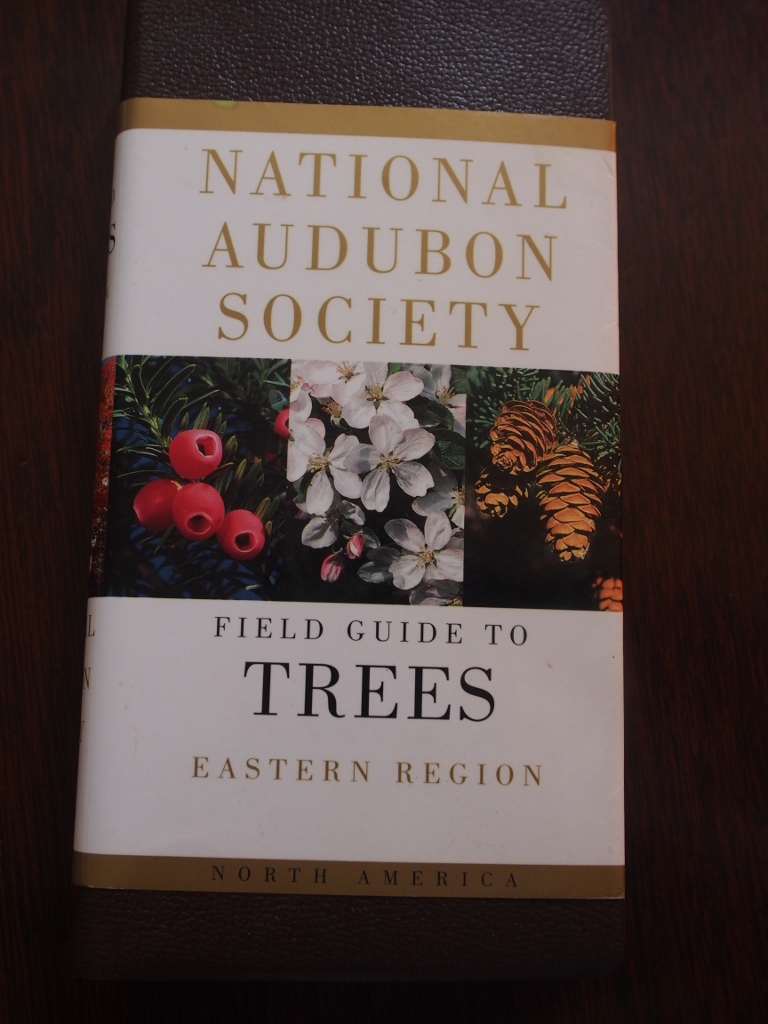for hikers, gardeners, and tree lovers
To make a prairie, it takes a clover and one bee, One clover, and a bee, And revery. The revery alone will do, If bees are few.
Emily Dickinson

I have found that field guides are really helpful books to keep in my personal library as reference material. They contain a wealth of information that will answer your questions about the natural world. Today, I am spotlighting three field guides. The first one, pictured above is a field guide to trees in the eastern region of North America. As the end of April is generally considered a good time to plant trees here in Western New York, which is USDA zone 6a, it’s a good idea to check the field guide to find out what trees will thrive in your town or city. For me, I know that I would need to plant trees that are tolerant of having wet feet, as Grand Island has a plethora of wetlands, mainly of two varieties (marshes and swamps). Also, I would need to consider the fact that the soil is very heavily clay. Clay soil retains nutrients well, but drainage is always an issue. In a heavy rainfall, the water tends to sit on the surface while it is being slowly absorbed into the ground. So, knowing these facts, I would take a look into the field guide and read up on some trees that I think would do well here and rule out trees that would not. The guide is very nicely arranged with two main section. One section consists of color photographs of tree trunks, leaves, and tree flowers. The other section gives a great deal of botanical information about the trees. It gives a description of the tree species, the habitat of the tree, and where the tree is likely to grow (the “range”). So I know that there are certain trees that thrive here, such as sugar maples, white oaks, hickories, tulip trees, apple trees, pear trees, and many others. I also know that there are other species of maple that would do well here, but, if I am not certain, I can look it up in the field guide.

When you’re out on a nature walk, you’re definitely going to encounter insects and spiders. Some spiders might be big, but the good news is that spider bites are very rarely fatal for human beings. And even better, only about a dozen of all 40,000 or so species of spiders are venomous. Which means that the overwhelming majority of spiders are quite harmless.. So enjoy the spiders, the bees, and all of the other insects. They are beautiful, and, if you’ve got your field guide with you, you can enjoy identifying the insects with the color photographs, as well as the descriptions. The descriptions include a description of the insect or arachnid species, their range, their habitat, the food that they eat, and an explanation of their life cycle.

The bird book has a similar format to the field guide to insects and spiders and, when you’re out looking for interesting birds to spot, is a good thing to carry around, along with binoculars and a spotting scope. If you can’t identify all birds by sight or by their calls and chirps, you can get needed help in identification with this very handy guide. Even if you use the guide, you will still impress your friends with your great knowledge of all things avian.
I would definitely encourage you to take a look at the wide variety of field guides that are available as great additions to your personal library.
What a great tip! A few times I’ve been very motivated to plant new trees or even plants but when I started googling the best ones for my areas I quickly became overwhelmed and gave up. Having a field guide on hand would definitely ease the process. Thanks for the suggestions!
You’re welcome! Enjoy the trees!
Alice, thanks for all this! I thought the Audubon Society only did birds, but here we are, with trees and insects and spiders! I was just thinking this week that I wanted a field guide about birds, so thanks for pointing me in an excellent direction!
You’re very welcome! There are many others, too. I also have a field guide for reptiles and amphibians, which is very interesting.